connect
people
Annual
Report
2015



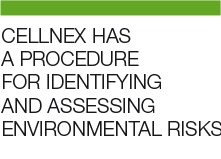 Cellnex has an environmental policy based on respect for the environment and the protection and conservation of biodiversity, through the efficient use of resources and promoting preventive action.
Cellnex has an environmental policy based on respect for the environment and the protection and conservation of biodiversity, through the efficient use of resources and promoting preventive action.
This policy involves taking measures to prevent pollution and reduce the environmental impact of the Company’s activities and facilities; it is the responsibility of everyone in the Cellnex team that the policy is adhered to.
Cellnex has a procedure for identifying and assessing environmental risks related to the Company’s business and its environmental impacts.
The most significant impacts are extracted from these assessments and inventoried. The impacts judged to be most critical are selected and incorporated into the Company’s management systems. Once incorporated, a monitoring system is established, and plans are devised to manage and mitigate the impacts.
The following management and efficiency plans are implemented according to the type of impact:
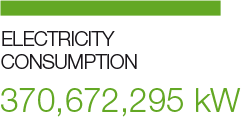 Consumption 2015
Consumption 2015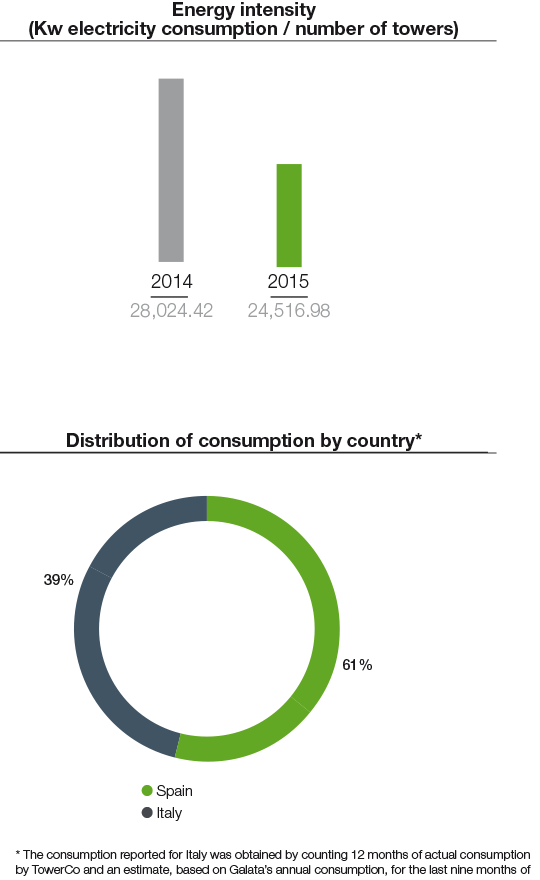
Cellnex monitors the Group’s energy consumption in order to achieve maximum efficiency and the lowest possible impact on the environment and hence on society.
Corporate electricity consumption in 2015 was 370,672,295 kW. This includes the annual consumption in Spain and the estimated consumption of Galata Italia for the nine months of 2015 in which the Galata was part of the Cellnex Group.
Cellnex Spain has photovoltaic generation facilities and small-scale wind turbines on its sites for its own consumption, which generated 65,310 kWh in 2015.
The reduction in the intensity of energy consumption (kWh/tower) achieved between 2014 and 2015 is explained by the addition of a significant number of new sites to the Cellnex network, which have substantially lower broadcasting consumption.
Diesel consumption during 2015, mainly for the use of electricity generators and the vehicle fleet, was 1,053,491 litres. In the case of Galata Italia, the data relate to an estimate for the months of 2015 in which the Company was part of the Cellnex Group.
Taking only the consumption of Cellnex Spain, there was a substantial cut of 15.6% in relation to 2014, with a consumption of 877,241 litres.

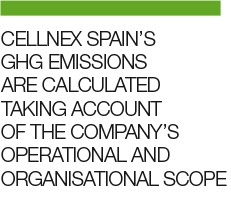 Carbon footprint
Carbon footprint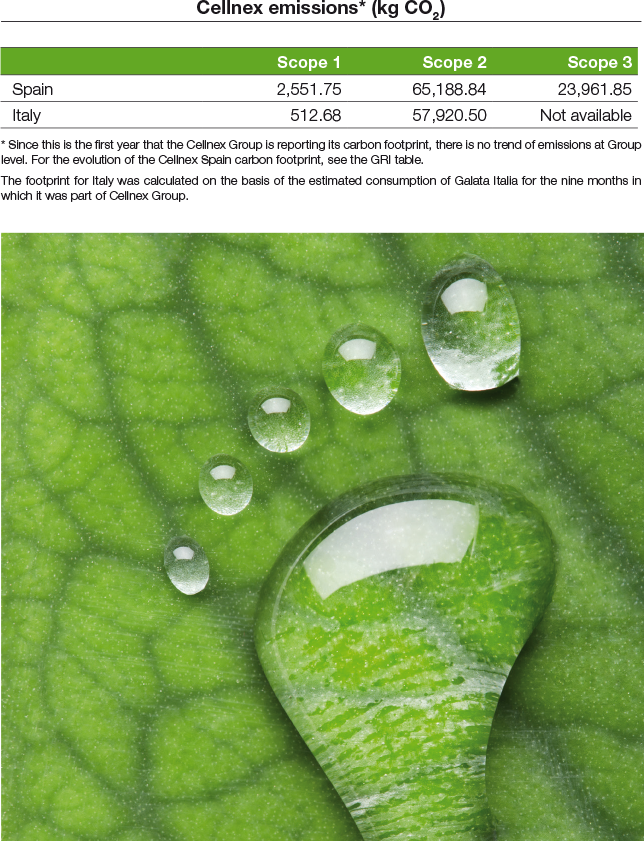
In 2015, Cellnex worked on the development and implementation of a software application, Clean CO2, which calculates and offsets both the corporate carbon footprint of the Group’s companies and the carbon footprint of the services it offers to its customers. This tool, based on the methodologies for calculating the carbon footprint in ISO 14064-1: 2012 and the Greenhouse Gas Protocol, aims to introduce the concept of sustainability and carbon management into the services that Cellnex provides to its customers, for the calculation, management, offsetting and notification of the impact on climate change through the use of the services provided. Clean CO2 gives the Company the capability to offset GHG emissions and obtain the “certified CO2 Clean” label, a document certifying that the service offered to the customer is neutral in terms of GHG emissions.
Cellnex Spain’s GHG emissions are calculated taking account of the Company’s operational and organisational scope. To that end, the organisational scope was calculated on the basis of the operational control criterion for the corporate premises and technicians of the Cellnex Spain companies: Tradia, Retevisión and OnTower.
The operational scope is based on the following criteria:
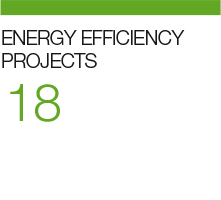 Energy efficiency
Energy efficiency During 2015, to improve the efficiency of its processes and activities and to reduce consumption of energy and natural resources, Cellnex implemented 18 energy efficiency projects at a number of the Company’s sites.
The efficiency projects implemented in 2015 are part of phase one of the energy efficiency project, and are of three main types: multifamily projects, individual climate projects and FC (Free-Cooling). Through these projects, the Company expects to achieve greater efficiency both at plants and on sites, which will be reflected in consumption over the coming years, as this is the first phase of the project.
Energy consumption has decreased as a result of three main activities:
Cellnex pays close attention to environmental protection and conservation activities, particularly any impacts that might cause an impairment or loss of biodiversity, fostering preventive measures and action to mitigate impact. Accordingly, in each of the Group’s companies the necessary steps are taken to minimise the environmental impact of the infrastructure they manage, with a view to integrate it as well as possible into its environment.

 Visual impact
Visual impactCellnex understands the importance of reducing the visual pollution of its infrastructure and thereby minimising its visual impact. During operations to install or modify antennas, the Company therefore strive to make this infrastructure blend into its environment.
Between 2014 and 2015, 20 measures were carried out to camouflage infrastructure and/or restore existing camouflage, at a total cost of €170,000. The main camouflage operations include the installation of radomes to cover panel antennas and structures to cover chimney antennas.

We use our own and third-party cookies to improve our services and show you advertising related to your preferences by analysing your browsing habits. If you continue to browse, we understand that you accept the use of these cookies. You can change your configuration or obtain further information here. Accept